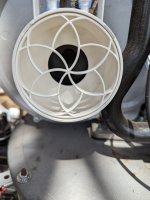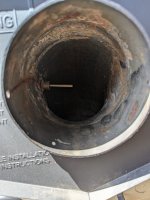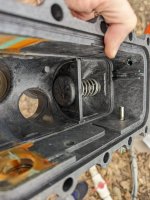Hi all, let me start by saying I've spent hours researching and reading up on the issue I'm having with my heater but I have a few questions on how to best proceed (I'm handy enough but pool equipment is new to me). We are in a new home and had the pool opened about 2 weeks ago. We've been using the mastertemp 400 heater to heat the spa without issue until a few days ago when the heater kicked on, ran for 3-5 minutes and would shut off. I started looking into it, got the top off and found the SFS error code. I tested the stack flue temp and it is rising up over 450+ hence the heater shut own.
The interior of the unit looks pretty clean, no major wear and tear. I checked the air intake and output and they both look OK to me and have cleaned out the pool filters to ensure sufficient water flow. I also removed and tested the thermal regulator and while it has a bit of green corrosion is is functioning as expected running under hot tap water.
After reading the forums it sounds like I likely have an issue with a sooted or calcified heat exchanger. My issue is how to figure out which to investigate? I've looked but I dont really understand what I should be looking for with a sooted exchanger before I go remove the manifold to check for calcification? Appreciate any guidance and I can post pictures if that's helpful. Thank you!
The interior of the unit looks pretty clean, no major wear and tear. I checked the air intake and output and they both look OK to me and have cleaned out the pool filters to ensure sufficient water flow. I also removed and tested the thermal regulator and while it has a bit of green corrosion is is functioning as expected running under hot tap water.
After reading the forums it sounds like I likely have an issue with a sooted or calcified heat exchanger. My issue is how to figure out which to investigate? I've looked but I dont really understand what I should be looking for with a sooted exchanger before I go remove the manifold to check for calcification? Appreciate any guidance and I can post pictures if that's helpful. Thank you!


















